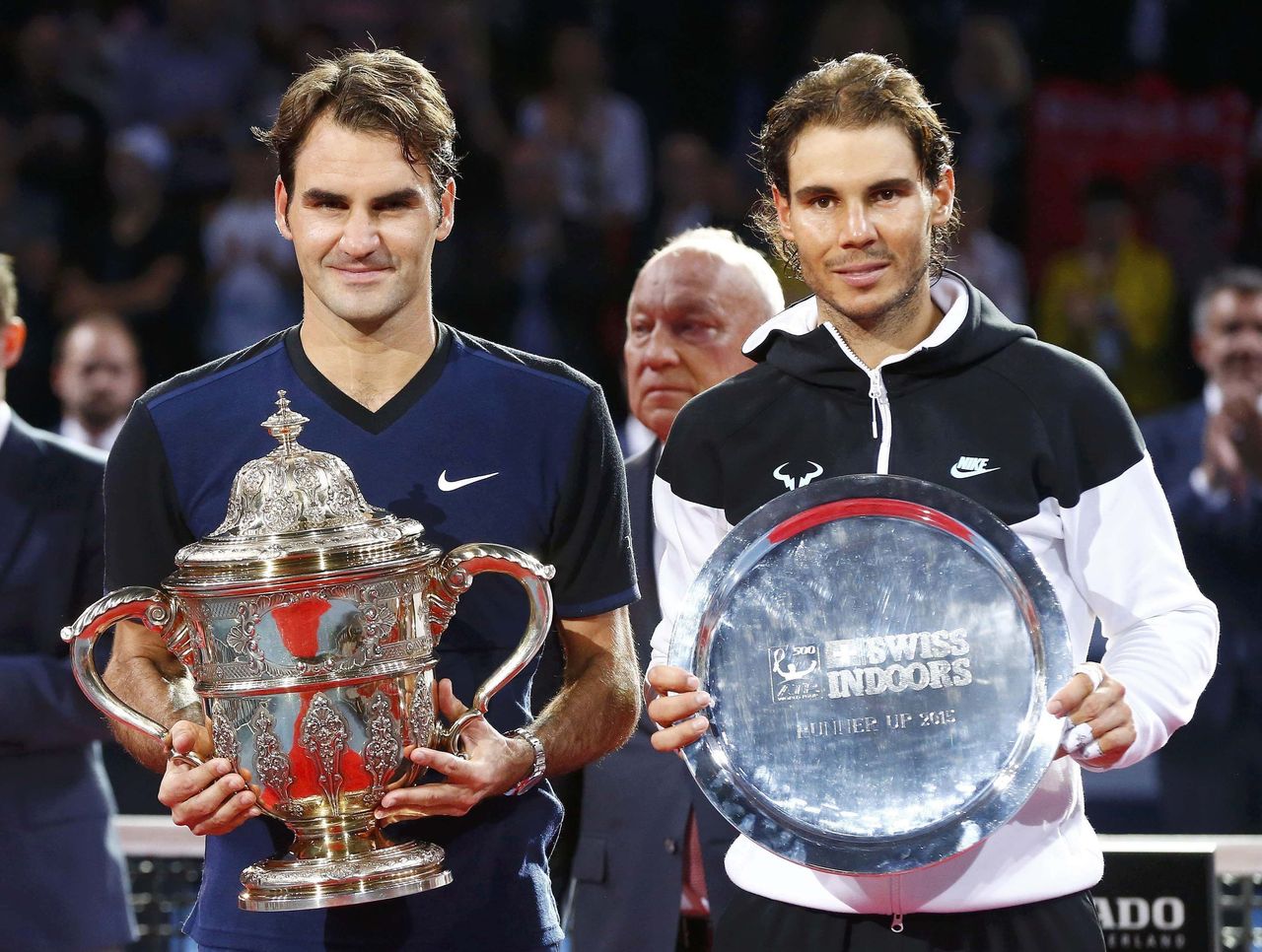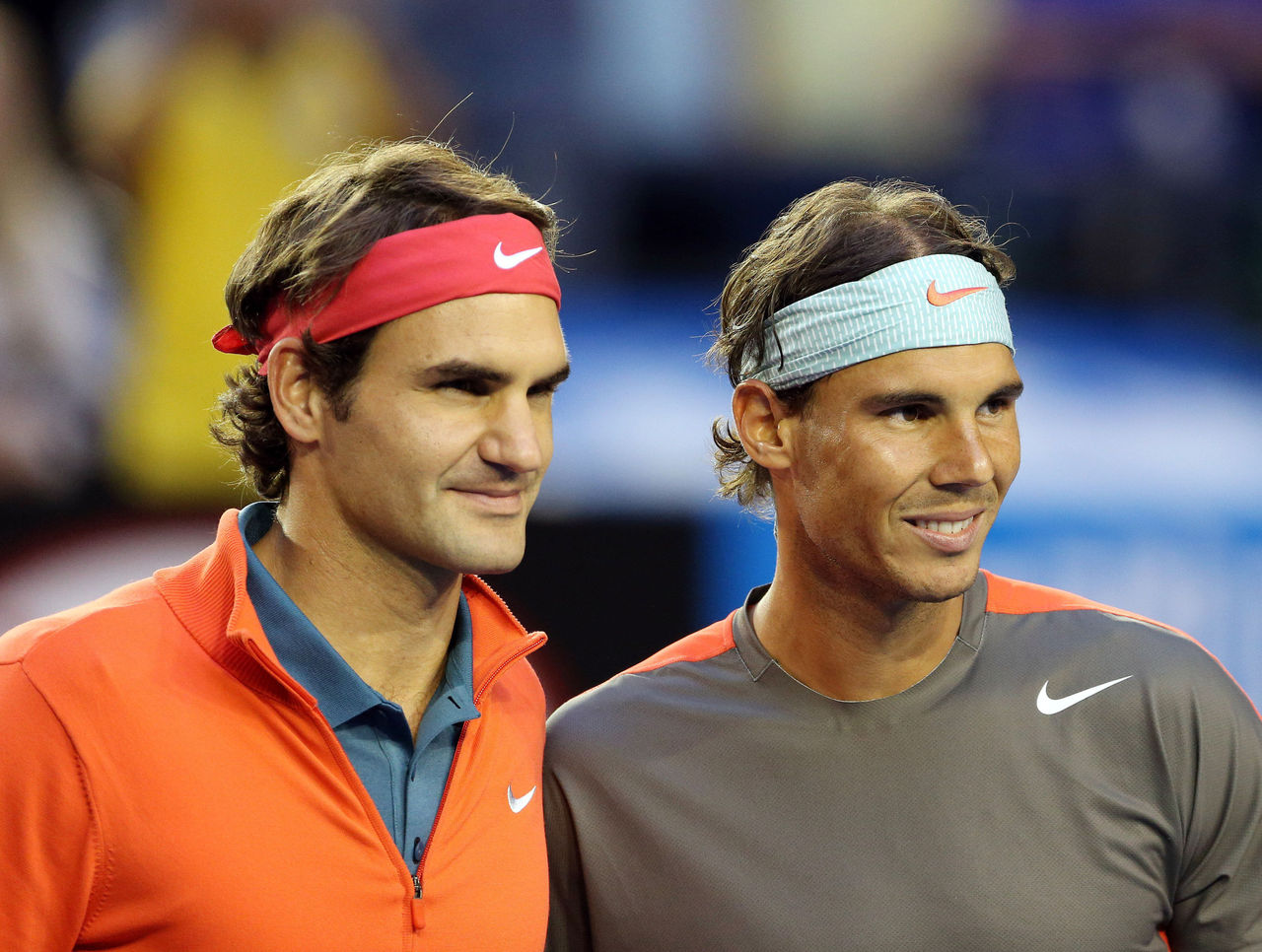Aussie Open final preview: Hello, old friend
Be honest: Did you see this coming?
Even the hardest of hardcore Fed fans and Rafa stans would've had to engage in some serious self-persuasion to come to the conclusion that Federer and Nadal - neither of whom has won a Slam since 2014, neither of whom even made a Slam final last year, both of whom were coming off long absences due to knee and wrist injuries (respectively), and who hadn't met in a major final in almost six years - would be the last two men standing at the Australian Open.
But indeed, that appears to be the situation (at least until we pinch ourselves and realize this was all just a fever dream we had while dozing through another Novak Djokovic victory speech). It took a bit of luck, and maybe a bit of magic, but mostly it took the two of them rediscovering the best versions of themselves. It took Nadal getting in touch with his pugilistic spirit, stepping into the court and taking the fight to his opponent, rather than waiting for it to come to him. It took Federer painting lines and dictating points with his backhand again, after that stroke had grown unreliable, and it took a faster-than-ordinary surface to help grease the wheels. It took both men gutting out two five-setters apiece, another thing they'd begun to struggle with as they've aged.
So here we are, preparing for the 35th edition of Federer-Nadal, at the end of which a 32nd Grand Slam trophy will be added to their collective haul. We'll soon find out whether it's Nadal's 15th, or Federer's 18th, but this is definitely one of those times you'll want to savor the journey before arriving at the destination.
The history

As most people are aware - in the case of Federer fans, painfully so - that despite all the hullabaloo about this rivalry, it's been heavily one-sided. Nadal holds a 23-11 edge, including 6-2 in major finals. In other words, he's basically been the Djokovic to Federer's Andy Murray.
And while it's true a bulk of Nadal's wins have come on his vastly preferred clay, he's still 8-7 against Federer on hardcourts, including 4-1 in their last five matches on the surface and 3-0 at the Aussie Open. That said, only one of those matches has come since 2014 - when Nadal began to dip and Federer experienced a resurgence - and Federer won it.
The thing about this rivalry is that there's only ever seemed to be brief overlaps in their peaks, like two ships passing in the night. Nadal would rise and Federer would fall off, and Federer would rise and Nadal would get hurt, and then Djokovic would show up in a destroyer to bust up the blockade. Now it almost seems like the two of them have circled around and met each other again, though perhaps in a different part of the ocean, trying to determine how much further they can press on into these uncharted waters. Just one reason this match should be among the most fascinating the two have played.
The stakes

Federer has a chance to extend his lead in the all-time Grand Slam tally to four by capturing No. 18. He's lost all three major finals he's played (all to Djokovic) since winning his 17th at Wimbledon back in 2012.
Nadal has a chance to both narrow the gap on Federer, and move past Pete Sampras into sole possession of second on the all-time list with his 15th Slam title. A second Aussie Open title would also give him at least two at every major, which would make him the first player in history to complete the career Grand Slam twice over.
Given the lofty hardware on the table, and the fact that we're well past the point where another major final clash between the two is an expectation, some are placing a good deal of significance on this match.
''That might be, as far as history goes, the biggest match ever in Australian Open history and maybe Grand Slam history," Andy Roddick suggested. "What's at stake there is beyond what pretty much any player can comprehend.''
We probably wouldn't go quite that far, but suffice it to say the outcome of this match will probably come to bear in some way when, years from now, tennis historians weigh the legacies of the two against each other.
What to expect

Honestly, both Federer and Nadal have been playing such great tennis in Melbourne, it's hard to imagine this being anything but a barnburner.
The best thing about this matchup has always been the contrast in styles; righty against lefty, Federer's frontal assault against the great bulwark of Nadal's defenses, Federer's marauding net-rush against Nadal's intractable baselining.
Nadal has given Federer fits with his wide lefty kick serves and topspin forehands high to the backhand side. He's reliably been able to produce errors from that wing, or else force Federer to run around to his forehand and leave the court open. The unusually fast court conditions, though, figure to help Federer, whose path to victory will involve pushing Nadal well back behind the baseline and then moving forward at the first opportunity.
It's also worth noting that Federer has had an extra day of rest, and that even though both played five-setters in the semis, Nadal's ran nearly two hours longer. True, that was nearly the identical situation when they met here in the 2009 final, and Nadal still somehow ended up with more gas in the tank as that match went into a fifth set. But one figures that's easier to do at 22 than at 30. Even as he nurses a mild thigh injury, Federer's legs should be fresher, and that will make a difference.
No matter what happens, just being here is an incredible achievement for Federer and Nadal, who were apparently too injured to even hit around when Federer came to Nadal's tennis academy in Mallorca during the offseason.
"Both of us, I think, worked very hard to be where we are," Nadal said on Friday. "Is great that, again, we are in a moment like this and we are going to have a chance again to enjoy a moment like this."
Us too, Rafa.
THE PICK: Federer in 5 sets
HOW TO WATCH: ESPN (U.S.) or TSN (Canada), Sunday at 3:30 a.m. ET.